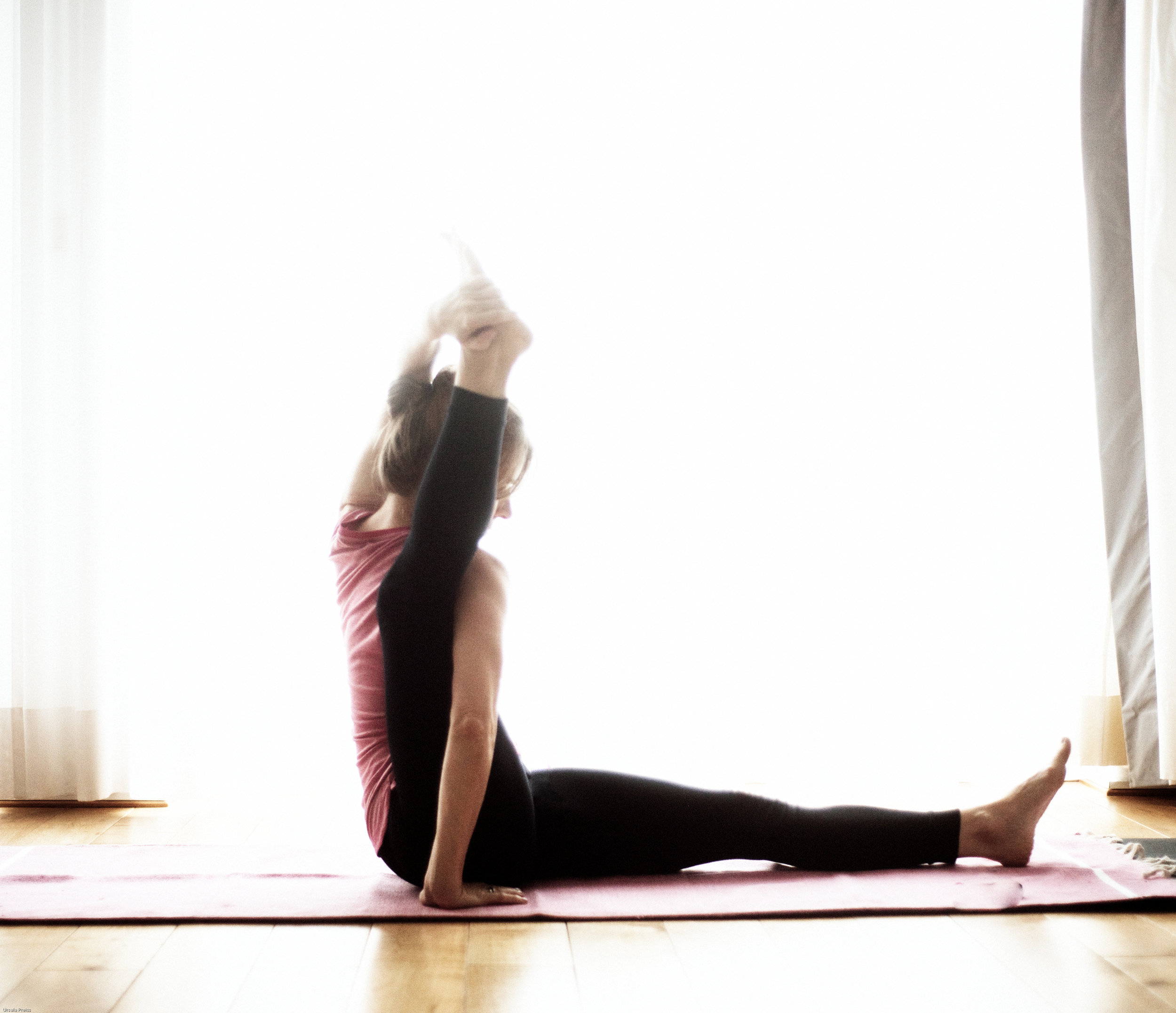Marichyasana A is a pose that prepares leg behind head poses. The knee is already above or behind the back. Sometimes this is the pose I exercise when my body feels too stiff for these leg behind head poses. Important is to move forward and to bring the abdomen close to the leg. To bind is the next step. It can be useful to stretch forward and to bind the hands in front of the foot.
For me the asana in the second picture is a very nice preparation, too. I stretch the leg and I stretch the body. The hand gives support. It’s not all or nothing. Tiny steps in the right direction are sometimes the best advice in order to approach challenging asanas.
Of course I appreciate the day off today.
Might be that I do some asanas today or strength training. I will surely not practice Ashtanga yoga.




